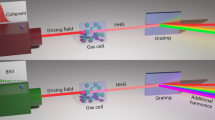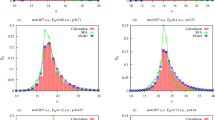Abstract
IN 1923, Bohr (Z. f. Phys., 13, P. 117; 1923) directed attention to the fact that the usual formulæ of the older quantum theory might not be strictly applicable to atoms which are subjected to intense radiation fields of high frequency, such as those of ordinary light. Schrödinger (see particularly equation 16, Ann. d. Phys., 81, p. 109; 1926) has formulated the differential equation for the ψ-function of an atom exposed to a harmonic electric force, and from this the allowed values of the quantity E appearing in the equation may be determined. In such a case, however, the physical interpretation of E is doubtful, though it seems highly probable that it represents the (average) energy of the disturbed atom. Thus we cannot be certain that the equation E1E2=h is correct for calculating the frequencies emitted by such an atom. Whatever be the final formulation of the theory, it seems reasonable to suppose that the energy levels of atoms in sources at very high temperatures may be modified by the electric and magnetic fields of the radiation from the source itself.
This is a preview of subscription content, access via your institution
Access options
Subscribe to this journal
Receive 51 print issues and online access
$199.00 per year
only $3.90 per issue
Buy this article
- Purchase on Springer Link
- Instant access to full article PDF
Prices may be subject to local taxes which are calculated during checkout
Similar content being viewed by others
Author information
Authors and Affiliations
Rights and permissions
About this article
Cite this article
RUARK, A. The Effect of Intense Light on the Energy Levels of Atoms. Nature 119, 389–390 (1927). https://doi.org/10.1038/119389b0
Issue Date:
DOI: https://doi.org/10.1038/119389b0
Comments
By submitting a comment you agree to abide by our Terms and Community Guidelines. If you find something abusive or that does not comply with our terms or guidelines please flag it as inappropriate.



